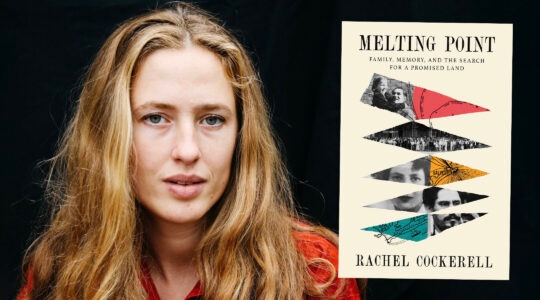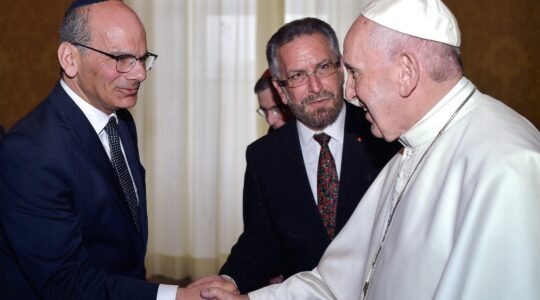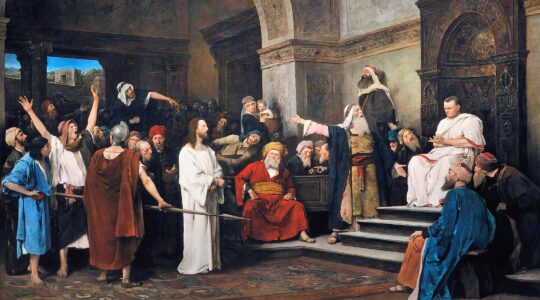Communal planners will be mining the rich findings for years of the New York Jewish population study released this week by UJA-Federation of New York. But anyone who cares about sustaining and strengthening Jewish unity in the community will share a sense of urgency about the results, which show that if not for the dramatic growth and religious involvement of the Orthodox community, we would be seeing downward trends in numbers and virtually every index of Jewish engagement.
Thirty-seven percent of Jews surveyed define themselves as “Just Jewish,” twice the figure of 1990, indicating a growing trend away from not only denominational labels but from affiliation with synagogues or Jewish institutions.
Over the last nine years, the level of Jewish engagement here has dropped in a number of ways. Just 57 percent believe that being Jewish is important, down from 65 percent. Only 44 percent believe being connected to a Jewish community is very important, down from 52 percent. And 14 percent of Jewish households never participate in a seder, up from 8 percent, while 19 percent never light Chanukah candles, up from 12 percent.
While the Reform and Conservative movements have each lost about 40,000 members here in the last decade, the Orthodox population, with its high birthrate, now makes up 32 percent of the Jewish community. What’s more, almost two-thirds of Jewish children in New York — 64 percent — are Orthodox.
The trends indicate that non-Orthodox Jews will continue to marry at a later age, increasingly out of the fold and have fewer children, while the Orthodox — particularly those who define themselves as chasidic or yeshivish (and together are labeled haredim) — will marry young, have more children and maintain high levels of religious observance.
These findings seem to bear out predictions that the Jewish community of the future will be small and heavily Orthodox.
Those charged with raising funds to advance the vital work of UJA-Federation, so that it can continue to serve the community, must be concerned that the segments of our population growing the most — the poor, the elderly and the haredim — are the recipients, not the givers, among us.
What’s more, the very essence of the federation system, with its wide array of communal social services and centralized giving, is premised on a cohesive population with shared values and goals. The image that emerges from the new study is one of increasing numbers of Jews moving in opposite directions — those embracing Jewish life and those avoiding it.
The center is diminishing dramatically, calling into question the very meaning, going forward, of “Jewish community.”
That presents a serious challenge to UJA-Federation and to all of us who seek to preserve and advance the cause of Jewish peoplehood. While the new report will require careful analysis and discussion, it already highlights the key role that the Modern Orthodox and Russian-speaking communities can play in strengthening the communal center. Both of those groups face internal debate over turning increasingly inward or moving closer to the larger Jewish community. (A current attempt by a segment of the Rabbinical Council of America, the largest body of Orthodox rabbis in America, to shift the group further to the right is a disturbing sign. See story, page xx.)
UJA-Federation has reached out to elements of both the Modern Orthodox and Russian groups, and will need to be increasingly attuned to their specific concerns. The Modern Orthodox want more attention paid to their issues, primarily relief from high day school tuitions, and the Russians want to feel more welcomed and accepted by the mainstream.
The good news: the survey underscores that sustained Jewish education and synagogue affiliation pay off in terms of strengthened Jewish identity. UJA-Federation’s major investment in revitalizing synagogues, supporting Jewish education and increasing the number of young people going on Birthright Israel trips has intensified a sense of Jewish engagement among those who benefited from these efforts.
How best to reach the large numbers of people in our community who show minimal interest in Jewish life — or whether it is worth the effort — is sure to be debated, as it should be.
For now we are grateful that, at a time when there is no major population study of American Jewry, UJA-Federation has provided a detailed portrait of who we are and where we stand today. It’s up to us all to reflect and act on where we are going — and whether we can indeed remain a community.
The New York Jewish Week brings you the stories behind the headlines, keeping you connected to Jewish life in New York. Help sustain the reporting you trust by donating today.




